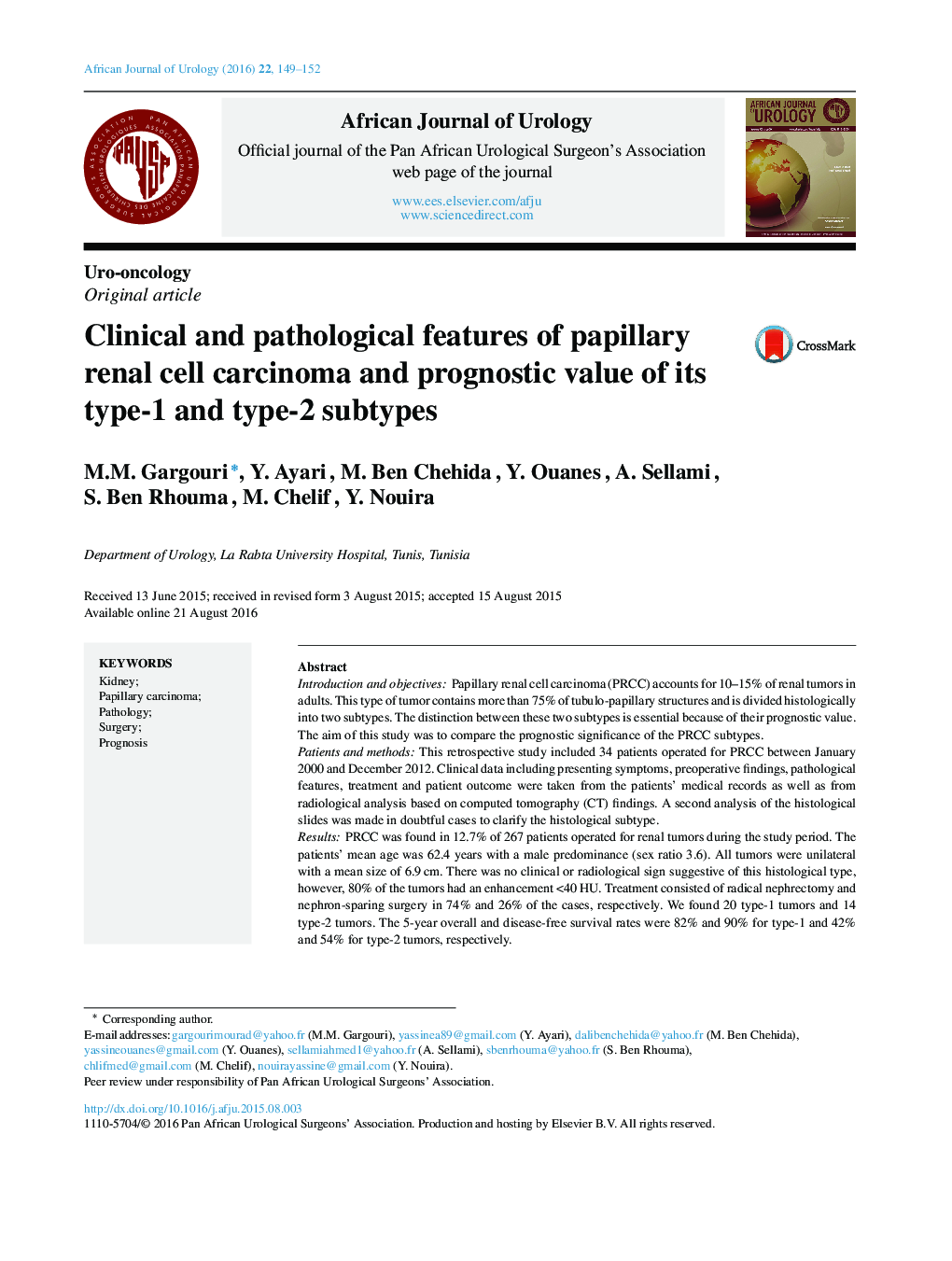| Article ID | Journal | Published Year | Pages | File Type |
|---|---|---|---|---|
| 4267489 | African Journal of Urology | 2016 | 4 Pages |
Introduction and objectivesPapillary renal cell carcinoma (PRCC) accounts for 10–15% of renal tumors in adults. This type of tumor contains more than 75% of tubulo-papillary structures and is divided histologically into two subtypes. The distinction between these two subtypes is essential because of their prognostic value. The aim of this study was to compare the prognostic significance of the PRCC subtypes.Patients and methodsThis retrospective study included 34 patients operated for PRCC between January 2000 and December 2012. Clinical data including presenting symptoms, preoperative findings, pathological features, treatment and patient outcome were taken from the patients’ medical records as well as from radiological analysis based on computed tomography (CT) findings. A second analysis of the histological slides was made in doubtful cases to clarify the histological subtype.ResultsPRCC was found in 12.7% of 267 patients operated for renal tumors during the study period. The patients’ mean age was 62.4 years with a male predominance (sex ratio 3.6). All tumors were unilateral with a mean size of 6.9 cm. There was no clinical or radiological sign suggestive of this histological type, however, 80% of the tumors had an enhancement <40 HU. Treatment consisted of radical nephrectomy and nephron-sparing surgery in 74% and 26% of the cases, respectively. We found 20 type-1 tumors and 14 type-2 tumors. The 5-year overall and disease-free survival rates were 82% and 90% for type-1 and 42% and 54% for type-2 tumors, respectively.ConclusionPRCC represents the second most common histological type of renal cancer. It has no clinical or radiological predicting signs, although CT enhancement is usually <40 HU. Distinguishing between the two subtypes is essential because of their prognostic value.
